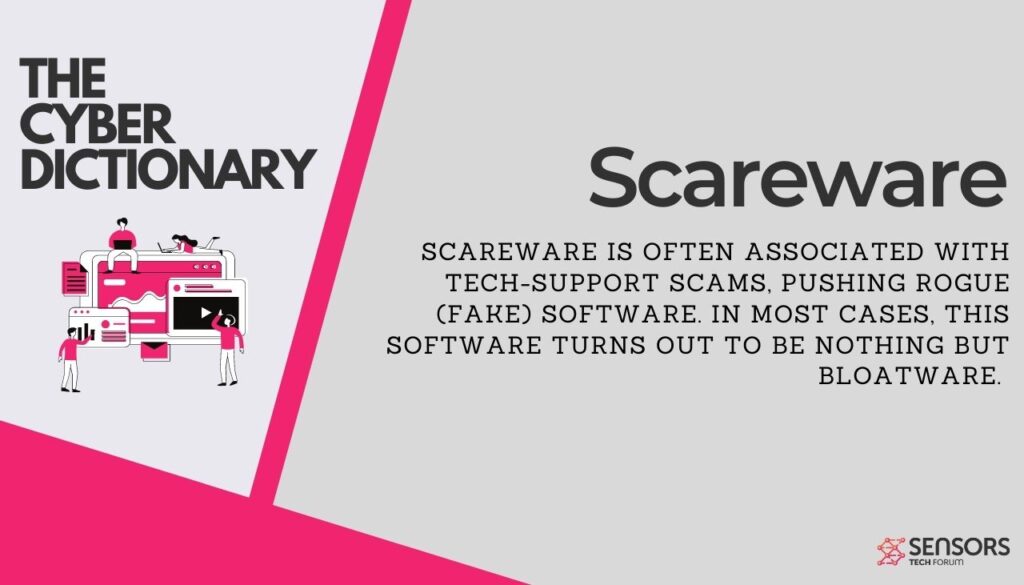What Is Scareware?
Scareware Definition
 Scareware is a malicious scam technique, typically using pop-up security alerts and other social engineering tricks to scare you into buying rogue software or security products.
Scareware is a malicious scam technique, typically using pop-up security alerts and other social engineering tricks to scare you into buying rogue software or security products.
Scareware Extended Definition: Scareware is often associated with tech-support scams, pushing rogue (fake) software. In most cases, this software turns out to be nothing but bloatware. Even though relatively harmless, scareware can damage your computer or can open the door to more severe issues.
Basically, as the name suggests, scareware relies on fear to push potential victims into performing specific actions, usually buying rogue software and thus revealing their payment details. One of the tell-tale signs of scareware is the sudden appearance of annoying pop-up notifications, a great illustration of social engineering fear tactics, created to convince you into performing further actions that will damage your computer.
Typically, once you are tricked into paying for the rogue software program which is intended to remove a security issue, it turns out that the program itself is the malware. Once this malware is inside your system, there is no telling what may happen next. One thing is sure – you remain vulnerable to further infections, until you completely remove all signs of the fake program from your computer.
Examples of the scareware approach include the Windows 10 May Be In Danger pop-up warning, Avira – Your PC may have been infected, and Norton Security Warning. As you can see, scareware authors often use the names of legitimate software products and companies in order to appear legitimate.
For more definitions, check our Cyber Dictionary.

